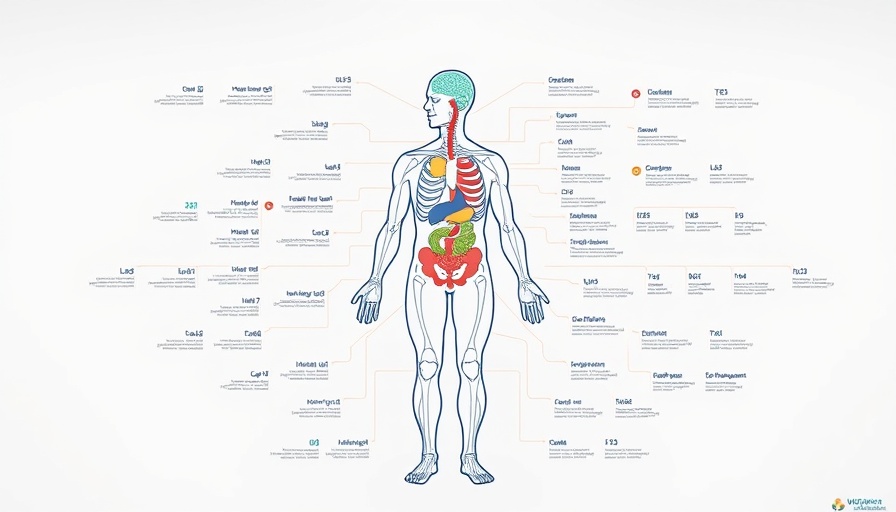
Understanding the Hidden Dangers of Our Environment
The narrative around cardiovascular diseases often centers on well-known risks such as obesity, smoking, and poor diet. Yet, as evidenced in recent research from a collaborative team led by the University Medical Center Mainz, the impact of environmental stressors is a crucial yet often overlooked piece of the puzzle. This extensive review highlights how factors like noise pollution, air contaminants, extreme heat, and chemical toxins specifically target the cardiovascular system, leading to severe health implications.
The Alarming Effects of Noise Pollution
Chronic exposure to street noise, particularly from heavy traffic, activates stress hormones that can lead to hypertension and chronic inflammation within our blood vessels. This form of environmental stress disrupts our sleep patterns and has been linked to various cardiovascular ailments, including arrhythmias and stroke. By understanding these physiological responses, we can better advocate for quieter living spaces and increased green areas in urban planning.
The Dangers of Air Pollution on Heart Health
Fine particulate matter, particularly ultrafine particles (PM₂.₅), represent a significant health threat as they can penetrate deep into the lungs. Once in the bloodstream, they cause oxidative stress and endothelium injury, which accelerates the development of atherosclerosis. The combined exposure to both air pollutants and noise amplifies these health risks, creating a toxic cocktail that can severely damage our cardiovascular health.
Heat Waves and Their Impact on Vulnerable Populations
Heat waves are becoming more frequent due to climate change, putting elderly individuals and those with pre-existing conditions at higher risk. In urban environments, concrete and metal absorb heat, creating "heat islands" that intensify these conditions, leading to increased incidents of heart attacks and strokes. Implementing cooler urban designs that consider the impact of heat on public health is essential.
The Threat of Chemical Pollutants in Our Ecosystem
Persistent environmental toxins such as pesticides and heavy metals can enter our bodies through food and drinking water. These pollutants hinder vascular function and enhance inflammation, leading to a long-term elevated risk of cardiovascular diseases. Awareness of these chemicals can prompt better regulations and encourage individuals to choose products and foods less likely to contain harmful substances.
Recognizing the Multimodal Exposome Phenomenon
What makes these environmental stressors particularly concerning is their combined effects—collectively referred to as the "multimodal exposome." For instance, noise pollution can exacerbate the cardiovascular impacts of air pollutants while heat may enhance the damaging effects of chemicals. The synergistic relationship of these factors underlines the necessity for comprehensive health strategies that address multiple risk factors concurrently, rather than in isolation.
Community Health Initiatives to Mitigate Risks
Awareness is the first step towards change. Community health and wellness programs that focus on educating the public about the sources of environmental stressors can foster initiatives aimed at reducing exposure. By promoting greener living spaces, advocating for policy changes, and supporting local clean air initiatives, communities can take an active role in protecting their cardiovascular health.
Embracing a Holistic Approach Towards Health and Wellness
The intersection of environmental factors with our cardiovascular health illustrates a need for a holistic approach towards wellness. Engaging with local health and wellness resources, including those available in San Antonio and surrounding areas, provides strategic pathways for individuals to improve their quality of life. From dietary changes to lifestyle medicine, the pursuit of optimal health can incorporate these critical environmental insights.
In conclusion, understanding the multifaceted risks posed by environmental factors to cardiovascular health is imperative. By being proactive and informed, individuals can take steps to safeguard their health and advocate for a cleaner, quieter environment that supports well-being. It’s essential for the community to engage in health and wellness events that aim to educate and empower.
 Add Element
Add Element  Add Row
Add Row 



Write A Comment